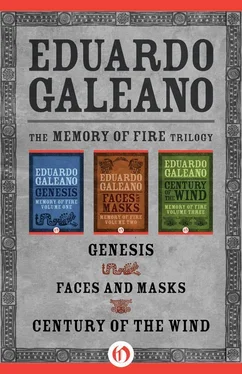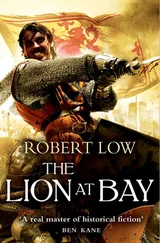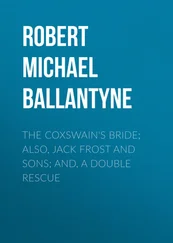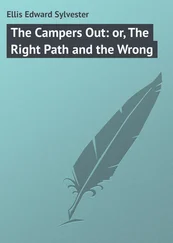(51 and 230)
Custer
Black Kettle, the Cheyenne chief, had warned him of it when they smoked the peace pipe together. Custer would die if he betrayed his promises, and no Indian would dirty his hands scalping him. Afterwards Custer burned down that camp and Chief Black Kettle was riddled with bullets amid the flames.
Now, General George Armstrong Custer is just one more of the dead of the Seventh Cavalry, which the Indians have wiped out on the banks of the Little Big Horn River. Custer had had his golden hair shaved off the night before. His smooth cranium seems intact, and he still wears that rather stupid expression of men who have never been defeated.
(51, 91, and 198)
Buffalo Bill
Shortly after the defeat at Little Big Horn, some soldiers descend upon the Cheyenne Indians camped on the banks of a brook, and in the shoot-out Chief Yellow Hand falls.
Buffalo Bill is first on the scene. At one slash he scalps the Cheyenne chief, and at one gallop flies to the footlights of distant cities. The history of the West is becoming a theatrical spectacle as it unfolds. The battle is not yet over and the scalper is already selling his epic feat in the theaters of Philadelphia, Baltimore, Washington, and New York. In memory and vengeance of General Custer, Buffalo Bill raises his arms before the packed auditorium: in one hand appears the knife and from the other, which clutches a scalp dyed with blood, hangs a cascade of multicolored feathers. The hero wears a heavily ornamented Mexican suit, with a pair of revolvers in his belt and his fifteen-shot Winchester slung from his shoulder. Soon the scene will adorn the covers of cowboy dime novels selling throughout the country.
Buffalo Bill, most famous of cowboys, has never herded a cow in his life. The living symbol of the winning of the West, the immortal superman, has earned his fame exterminating Indians and buffalos and talking endlessly about his own courage and marksmanship. They baptized him Buffalo Bill when he was working for the Kansas Pacific Railroad: he says that in a year and a half he fired 4,280 shots and killed 4,280 buffalos although women prevented him from going all out.
(157)
Departure
Eleven times General Santa Anna had been president of Mexico. He bought his generals’ loyalty by selling bits of the country and imposing taxes on dogs, horses, and windows; but he often had to flee from the palace disguised as a pauper. Although he specialized in losing wars, he had many statues of himself erected galloping in bronze, sword on high, and by decree he turned his birthday into a national holiday.
When he returned from exile, all his friends had died, and all his enemies too. Buried deep in an armchair, always with a fighting cock in his arms, Santa Anna rubbed old medals or scratched his cork leg. He was blind, but thought he saw carriage-loads of princes and presidents drawing up at his door. He was deaf, but thought he heard supplicatory multitudes coming to plead for an audience, clemency, or a job.
“You wait!” Santa Anna would yell. “Shut up!” —while the last of his lackeys changed his wetted trousers.
Now from his house on Vergara Street, mortgaged, always empty, they take him out to the cemetery. The cocks march ahead of the coffin, confronting people and looking for a fight.
(227 and 266)
The Civilizer
Justo Rufino Barrios, president of Guatemala, closes his eyes and hears a din of railroads and steam engines violating the silence of the monasteries.
There is no stopping synthetic dyes in the world’s markets, and no one buys the cochineal and indigo that Guatemala sells. It’s time for coffee. The markets demand coffee and coffee demands lands and hands, trains and ports. To modernize the country, Barrios expels the parasitic monks, seizes from the Church its immense properties and gives them to his closest friends. He also expropriates the lands of Indian communities. Collective property is abolished by decree and compulsory peonage is imposed. To integrate the Indian into the nation, the liberal government makes him a serf of the new coffee plantations. The colonial system of forced labor returns.
Soldiers tour the plantations distributing Indians.
(59)
The Socialists and the Indians
It is painful to say so, but we must. Colonel Alberto Santa Fe says it from Tlatelolco prison: the Indians were happier under Spanish rule. Today they are pompously called free and they are slaves.
According to the socialist Santa Fe, who has set off an Indian insurrection in the valley of Texmelucan, the ills of Mexico stem from the poverty of the people, which in turn stems from the concentration of land in a few hands and the lack of industry, because everything comes from abroad when we could make it ourselves. And he asks himself: would we do better to lose independence and become a North American colony, or to change the social organization that has ruined us?
In the newspaper The Socialist, Juan de Mata Rivera also proclaims that the Indians were better off in the colony, and demands that their lands be returned to them. There is no law granting rights to thieves over the fruits of violence and infamy.
At the same time, campesinos of Sierra Gorda publish their “Socialist Plan.” They call the rapacious big estates and governments that have put the Indians at the landowners’ service the root of all misfortune. They propose that haciendas become “townships,” that community property in farmlands, waters, woods, and pastures be restored.
(129 and 274)
1879: Choele-Choel Island
The Remington Method
Argentine soldiers conquer twenty thousand leagues of Indian land.
The London market demands a multiplication of cattle; and the frontier explodes. For the southward and westward growth of the great estates of the pampas, repeating rifles empty out “empty spaces.” Clearing savages out of Patagonia, burning villages, using Indians and ostriches for target practice, General Julio Argentino Roca winds up the brilliant military career which he began in the wars against gauchos and Paraguayans.
On the island of Choele-Choel in the Negro River, four thousand dusty soldiers attend Mass. They offer their victory to God. The desert campaign is over.
The survivors — Indian men, Indian women, frontier booty — are divided among estancias, forts, stables, kitchens, and beds. More than ten thousand of them, calculates Lieutenant Colonel Federico Barbará. Thanks to the generosity of Argentine ladies, says Barbará, the savage children change their chiripás for pants and come to look like human beings.
(353)
Martín Fierro and the Twilight of the Gaucho
José Hernández publishes in Buenos Aires the final part of “Martín Fierro,” a song of the death-throes of the gaucho who made this country and ended up without a country. For some time the other half of this splendid poem has been circulating throughout the River Plata countryside, its stanzas basic necessities of life like meat, maté, and tobacco.
Sadly reciting couplets around the campfires, serfs on the big estates and conscripts in the forts evoke the ways of that wild brother, the man without ruler or rules, and thus resurrect the memory of their lost freedom.
(158)
Maceo
The exiled Antonio Maceo reaches the heights of Belle Air on the road to Santo Domingo when five assassins fall upon him. It is a night of full moon, but Maceo escapes from the shoot-out and at a gallop, buries himself in the brush. The Spanish consul in Haiti had promised the killers twenty thousand pesos in gold. Maceo is the most popular and dangerous of the fighters for the independence of Cuba.
Читать дальше












